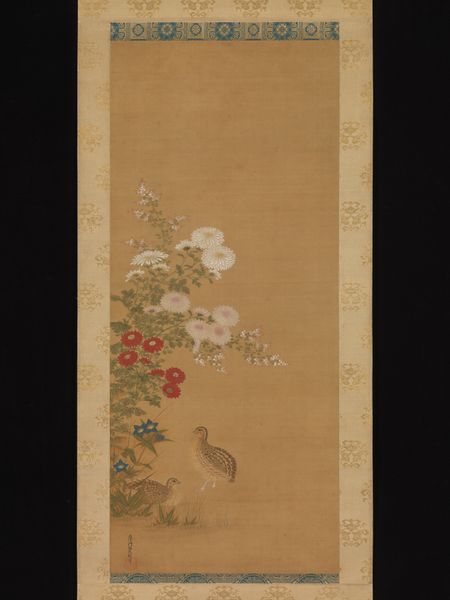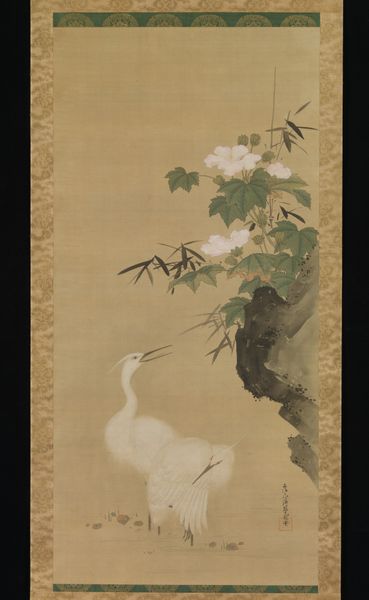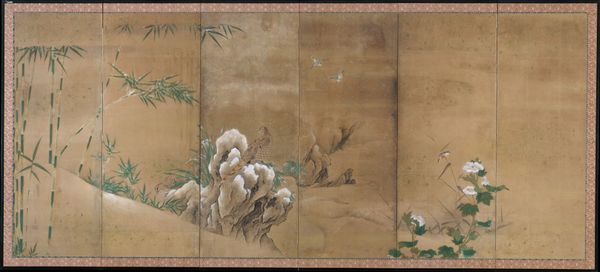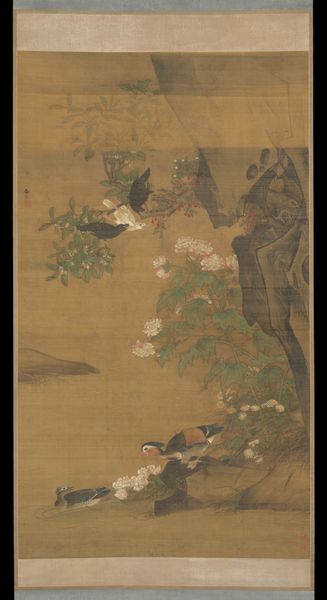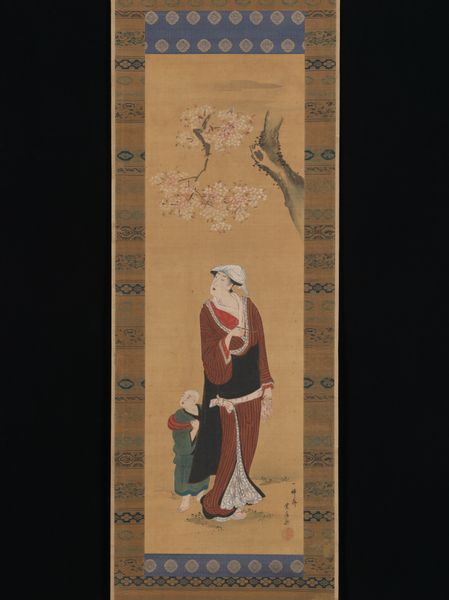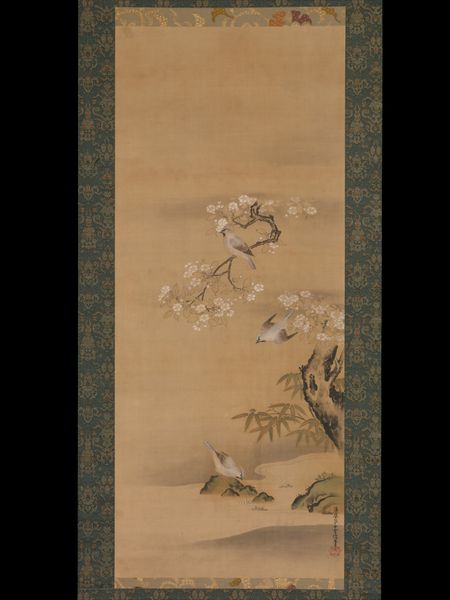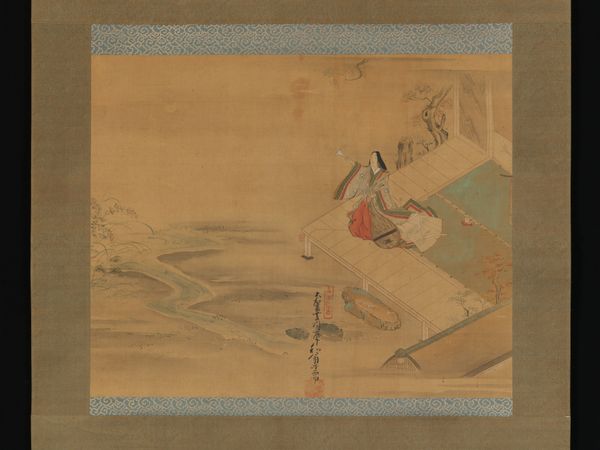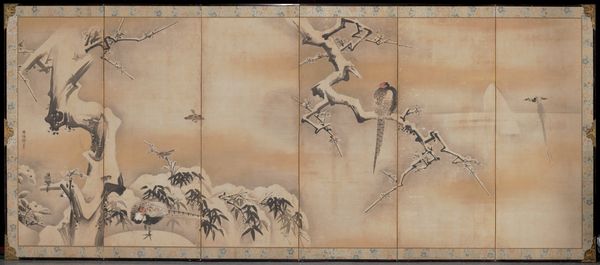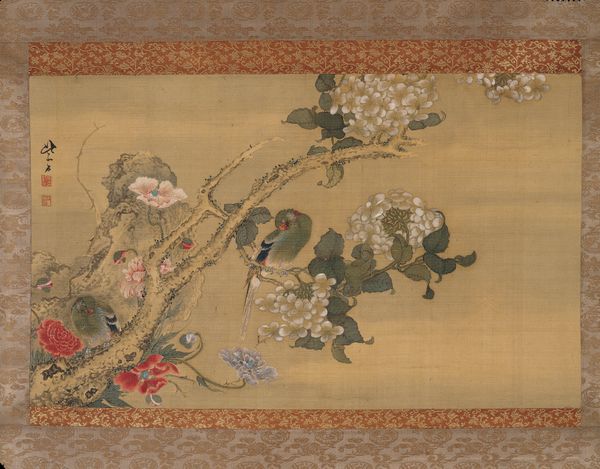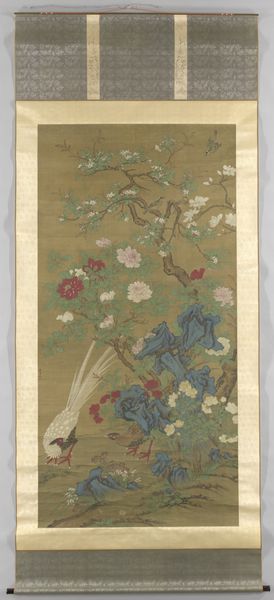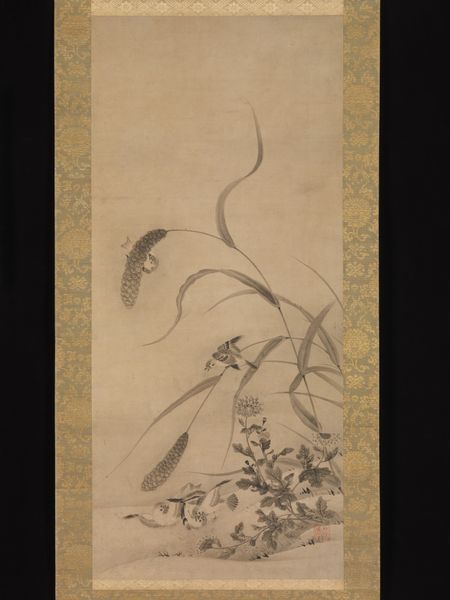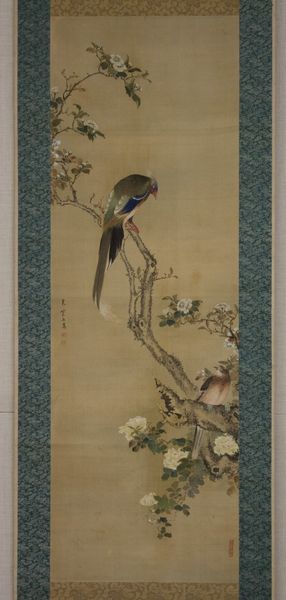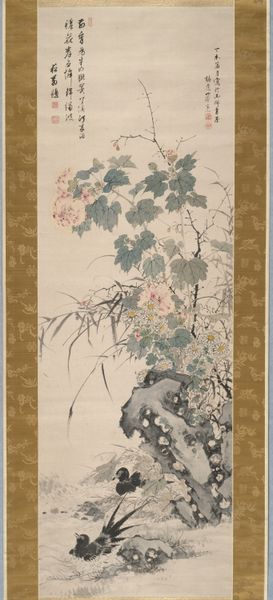
painting, watercolor
#
organic
#
painting
#
asian-art
#
landscape
#
figuration
#
watercolor
#
line
Dimensions: Image: 59 1/2 × 55 3/8 in. (151.1 × 140.7 cm)
Copyright: Public Domain
Curator: Here we have “Crane, pine, and rock” by Chen Zhaofeng, created between 1867 and 1899. It's currently held in the Metropolitan Museum of Art. The work uses ink and watercolor on silk. Editor: My first impression is of quiet elegance, almost like a staged performance of nature. The color palette feels very soft, which lends it a certain delicacy. Curator: Indeed. Historically, these kinds of images functioned on a deeply symbolic level. The crane, the pine tree—both symbols of longevity and good fortune that would have resonated with a specific educated elite. Think of it as a kind of visual language. Editor: That makes sense. I’m immediately thinking about the context in which it would have been displayed. Given its size, did it serve more of a decorative or didactic function? The limited palette and subject seems exclusionary when thinking about class and cultural power, I would imagine it may also function to reinforce that. Curator: Good question. Likely both. We should consider not only aesthetic tastes, but what that taste signified. By choosing this image, the patron displayed an adherence to the conservative aesthetic. Moreover, to place the artwork in an official context sends that message. Editor: The details intrigue me, the fine line work, the slight asymmetry, gives it a lifelike quality. There is this sense of fragility inherent within watercolor on silk and its treatment and conservation. Curator: Right, the fragility makes these works unique because they can be altered very easily over time. The work is both temporal in the material and suggestive with the crane being mid action. We must be hyper-aware of the conservation timeline of cultural history because even with this artwork, you can still find traces of earlier attitudes. Editor: Absolutely. It brings an added layer to the work, to understand it as an active participant in history. Thank you for helping to ground my perspective here and connect it to our past. Curator: Thank you for encouraging a more expanded historical point of view. It brings context to our present as well.
Comments
No comments
Be the first to comment and join the conversation on the ultimate creative platform.
